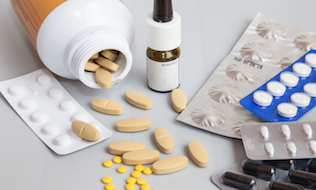
As the prevalence of diabetes continues to rise, so do the increases in cost, according to Adam Hotchkiss, medical science liaison at Novo Nordisk Canada, during Benefits Canada‘s 2019 Halifax Benefits Summit on Sept. 24.
“In 2010, $11.7 billion was spent in Canada on the treatment of diabetes as well as its complications,” he said. “This is estimated to increase to approximately $17 billion by 2020. However, what’s interesting is that a majority of these costs — 80 per cent — can be attributed to diabetes complications.”
Whether it’s type 1 or 2 diabetes, elevated blood sugar over the long term engenders the same complications, noted Hotchkiss. These can be broadly split into two categories: microvascular, which affects small vessels supplying blood to the eyes, kidneys and peripheral nervous system, and macrovascular, which affects large vessels supplying blood to the brain, heart and coronary arteries.
Read: Focus on preventative measures in fight against chronic illness
“The ideal intervention is to prevent diabetes from happening in the first place. Or if someone does develop it, provide them with effective medications or other treatment paradigms, which would slow the disease’s progression and avoid long-term micro and macrovascular complications.”
Hotchkiss highlighted traditional and newer medications, starting with sulphonylureas, an older class of diabetes medication that stimulate insulin production through the pancreas. When blood glucose levels begin to drop, a sulphonylurea will tell the pancreas to continue to produce more insulin, he said, which can cause blood glucose levels to dip into hypoglycemic range. Another older class of medication, Metformin, decreases the liver’s glucose production and increases sensitivity to the effects of insulin, he added, noting Metformin has had a long track record of safety — it doesn’t cause hypoglycemia and is the first-line treatment for those with type 2 diabetes.
Newer medications have been developed and have maintained their efficacy in terms of lowering blood sugar, in addition to delaying and preventing the onset of micro and macrovascular complications, said Hotchkiss. “They come with a considerably improved safety profile.”
Read: Prediabetes among biggest concerns for employee health
He also spoke about GLP1 receptor agonists, which stimulate the pancreas to produce more insulin, but only when sugars are beginning to rise. This provides patients with effective glucose lowering and a safeguard against hypoglycemia, he said. DPP-4 inhibitors work through a similar mechanism and have the same effects as GLP1 receptor agonists, he added, while SGLT2 inhibitors block the reabsorption of glucose from the kidneys. When blood glucose levels begin to go up, the kidneys normally filter out glucose but reabsorb it. This drug blocks that process so more glucose is secreted in the urine that brings blood sugar down, but only when blood sugar levels begin to rise, said Hotchkiss.
A future perspective for diabetes management includes oral peptide delivery. GLP1 receptor agonists, to date, have all been injectables, which has been identified as a barrier to the widespread use of these medications.
Further, he noted a raft of research is going into combining multiple peptides to have even more blood glucose control. And, on the technological side, there have been major advancements in blood glucose monitoring.
“The more information you can have on whether blood glucose is rising or falling, and the patterns of those, the more effective you can have targeted treatments and approaches.”
Read more stories from the 2019 Halifax Benefits Summit.
